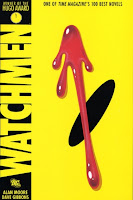Illustrated History – 180 pages - my copy (paperback; 1994) borrowed from the University of Plymouth library during November 2011
- 2 nods out of 5 -

Readers of the Worm’s very recent reviews out there might have noticed a slight slant towards the period of Nazi Germany. We’ve had Taylor’s The Course of German History and then a chronology of Hitler’s life and times. The next instalment: The Holocaust.
The death of millions is never an easy historical period to approach: many documentaries, books and films have been criticised for trivialising or not getting to the heart of the matter and failing to represent the tremendous loss of life. At first glance, The Holocaust: For Beginners appears to fall into the same camp. Normally “beginner” books are for those who wish to cook pasta dishes, speak French or learn how to play the guitar. However, the series from Icon is intent on dealing with galaxy-sized issues to the uninitiated reader. For example, how about: Feminism: For Beginners, Marx: For Beginners, Ecology: For Beginners, and yes, The Universe: For Beginners.
In the space of 180 pages these authors are able to use a sparse amount of wording to get across a great amount of information. This, along with its illustration, is the book’s key to a certain amount of success. The timeline stretches from the Dark Ages (‘the guilt of the Jews’), through to the twentieth century; whilst the major events of the Nazi period are headed, including: The Warsaw Ghetto, The Industrialisation of Mass Murder, and The Killing Centres.
The illustrations are in stark black and white. One such harrowing image is that of compacted dark, gloomy faces in a train, the running caption reading: DOES ANYONE REALLY BELIEVE THAT OUR CRIES WERE NOT HEARD? Yet some of its most striking pages are a sparse amount of text; take for example page 24:
1. You have no right to live among us as Jews.
2. You have no right to live among us.
3. You have no right to live.
During the timeline of the 1930s and 1940s there is little in the way of analysis: that is left to the reader to decide. The final pages are dedicated to a surprisingly in-depth conclusion, about revisionist historians, Holocaust deniers, as well as modern parallels on how the Israeli state treats Palestinians. Will anything ever be learned from History?
It would be false to claim that this book stands toe-to-toe with other, meatier, heavier books on the Holocaust. But, that is not its aim. It is an introduction to the horror and the timeline, allowing the reader to move onwards after reading in search of more truths in this haunting period of human history.
But it here:
http://books.google.co.uk/books/about/The_Holocaust_for_beginners.html?id=yuCSQgAACAAJ&redir_esc=y






